Selena Carty, a BA History with Military History student attending the University of Gothenburg’s Summer School of Sustainability – the second part of her blog.
Week one in Gothenburg, Sweden has created a calmness unfamiliar to me. Walking and the constant connection to nature has been having a tranquil impact on me. The fast pace of London is void here and is allowing me to have more time. I am a mother of a 13-year-old son and a 5-year-old daughter, so being away from them also allows me to have isolated time that is unfamiliar to me. (I call them twice a day, just before school and after school to learn about how they slept and how their days were, all whilst sharing images and my experiences)
The feeling of home isn’t lost on me. As once I feel comfortable, I can navigate without fear or concern and Gothenburg supports this feeling within me.
Our first trip for Week 2 was to the Second-best amusement park in the European Star Awards, Liseberg, right here in Gothenburg, Sweden. Liseberg is celebrating 100 years of providing entertainment and excitement to the citizens of Gothenburg and its visitors.
I have not been to an amusement park for over 20 years and if not for the learning experience here at summer school, I doubt I would have broken this record! Learning about the work put in to designing the park, how it keeps up to date with sustainable measures and dealing with challenges I felt compelled to give it a go. And give it a go I did!!!
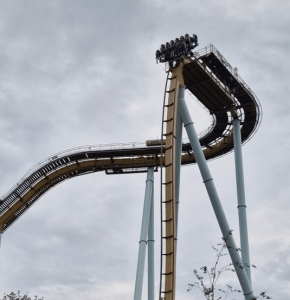
A ride with a ‘death drop’ which I rode!
I can definitely see why they have remained open for 100 years. Whilst I was lining up, I noticed the reactions of the other guests within the park. The energy felt of pure excitement and adventure were in the air, supporting me to also add my energy to the mix. On each ride I chose, I spent my time shaking my head and allowing myself to feel through my fears, tears, excitement and being very much in the present.
Our following trip was a triple whammy. The Maritime Museum, Aquarium and Monument called ‘Woman at Sea’.
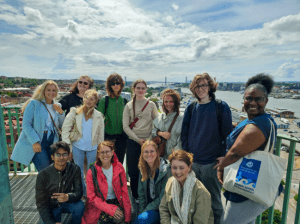
Summer School group at the top of the monument
Woman at Sea was created to honour the lives of the men and women who had perished during World War 1, even though Sweden was neutral during this war. The Merchant ships were impacted by those warring within the seas around Sweden and the lives of those who were caught in the cross conflict have their names in gold at the base of this monument. 650 lost their lives of which 35 were women. The women’s name are in full, which allows us to identify them from the men.
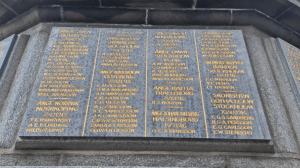
A column of names at Women at Sea
I always try and find Global African history wherever I go and was not disappointed as I learnt of the Belgium rule of the Congo during the 18/1900’s.
Belgium was also neutral at the start of World War I, however found themselves having to take action due to the invasions made by Germany in Europe and within the African continent.
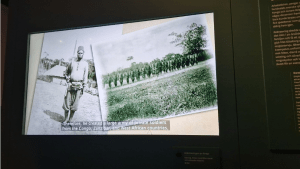
Video segment that explained the colonisation of the Congo.
To end the week we were taken to the Energy museum, which is an unofficial museum as there are not additional translations available to read any materials.
There were so many artefacts that have been collected by private people brought together to display a history of changes to energy overtime. Many of the items located within this museum I have also seen in England, Jamaica, and Ghana having looked at the cultural history of the communities coming from countries within the British Empire to England since we just celebrated Windrush 75.
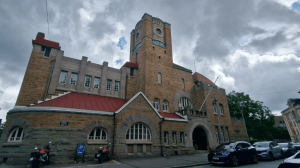
Energy Museum
This week’s excursions and classes continue to inspire my thoughts and ideas. Allowing me to focus on what I truly wish to say and share and how I utilise the historical monuments, artefacts, and global experiences to accomplish this.